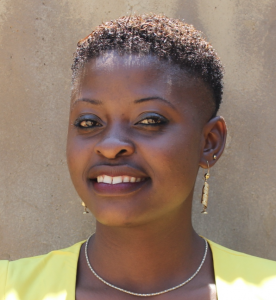The Bukhakunga area is rural and free from noise. Everywhere is so green, making this a beautiful community, a green jewel of Kenya. The air is fresh and cool. Homes are made of mud and smeared with a special colored mud that comes from down the stream.
The main livelihoods are selling farm produce and doing casual labor. Many community members grow maize, vegetables, beans, and sugarcane. Some have nappier grass which is sold to people who own cattle.
A day for a person living in this community begins at the rooster's call. This is the time children wake up to prepare for school while women are up ensuring everyone gets a cup of tea before they leave. On finishing the general cleanliness in the kitchen and within the compound, they go to the spring to fetch more water before the sun rises. The majority of the day is spent working on the farm.
77 people in Bukhakunga use Mukomari Spring as their main water source. It was impactful to arrive at the spring to see the need for ourselves. First, the spring is open to every kind of contamination and dirt that finds its way down the slope around the spring. The fertilizer used in farming, droppings from the birds of the air, soil erosion, and any other human activities cause the water here to be unsafe for drinking.
To collect water, a person with a bucket has to carry along a small scooping tin or container so that it can be used to draw water. The large container is dunked under the surface and comes out about half full, so the smaller container is used to fill it the rest of the way. The constant dipping stirs up the bottom of the spring and muddies the water, so the next person in line often has to wait before they can start fetching water.
People, especially the young children, complain of stomach pains and diarrhea after drinking this water.
"Having unclean water is like living on a contract. You do not know when sickness will befall you for the water source is quite open to any pathogen. This has been a problem for so long, which has made me make frequent visits to the hospital to seek medication for my children who on every visit, the results are typhoid," said Mrs. Nafuna.
"I have been wishing that our water source can be protected because it's the main cause of these diseases and now I thank God for bringing you here..."
What we can do:
Training
Community members will attend hygiene and sanitation training for at least two days. This training will ensure participants have the knowledge they need about healthy practices and their importance. The facilitator plans to use PHAST (Participatory Hygiene and Sanitation Transformation), CLTS (Community-Led Total Sanitation), ABCD (Asset-Based Community Development), group discussions, handouts, and demonstrations at the spring. One of the most important topics we plan to cover is the handling, storage, and treatment of water. Having a clean water source will be extremely helpful, but it is useless if water gets contaminated by the time it’s consumed. Handwashing will also be a big topic.
Training will also result in the formation of a committee that will oversee operations and maintenance at the spring. They will enforce proper behavior around the spring and delegate tasks that will help preserve the site, such as building a fence and digging proper drainage. The fence will keep out destructive animals, and the drainage will keep the area’s mosquito population at a minimum.
Sanitation Platforms
Most people here have a pit latrine and do their best to keep them clean. The latrines that are made of mud are the most difficult to clean, while others have wooden floors that can't get wet because they'll rot. Those who don't have a latrine share with their neighbor.
On the final day of training, participants will select five families that should most benefit from new latrine floors.
Training will also inform the community and selected families on what they need to contribute to make this project a success. They must mobilize locally available materials, such as bricks, clean sand, hardcore, and ballast. The five families chosen for sanitation platforms must prepare by sinking a pit for the sanitation platforms to be placed over. All community members must work together to make sure that accommodations and food are always provided for the work teams.
Spring Protection
Protecting the spring will ensure that the water is safe, adequate and secure. Construction will keep surface runoff and other contaminants out of the water. With the community’s high involvement in the process, there should be a good sense of responsibility and ownership for the new clean water source.
Fetching water is predominantly a female role, done by both women and young girls. Protecting the spring and offering training and support will, therefore, help empower the female members of the community by giving them more time and efforts to engage and invest in income-generating activities.

 Protected Spring
Protected Spring
 Rehabilitation Project
Rehabilitation Project








































